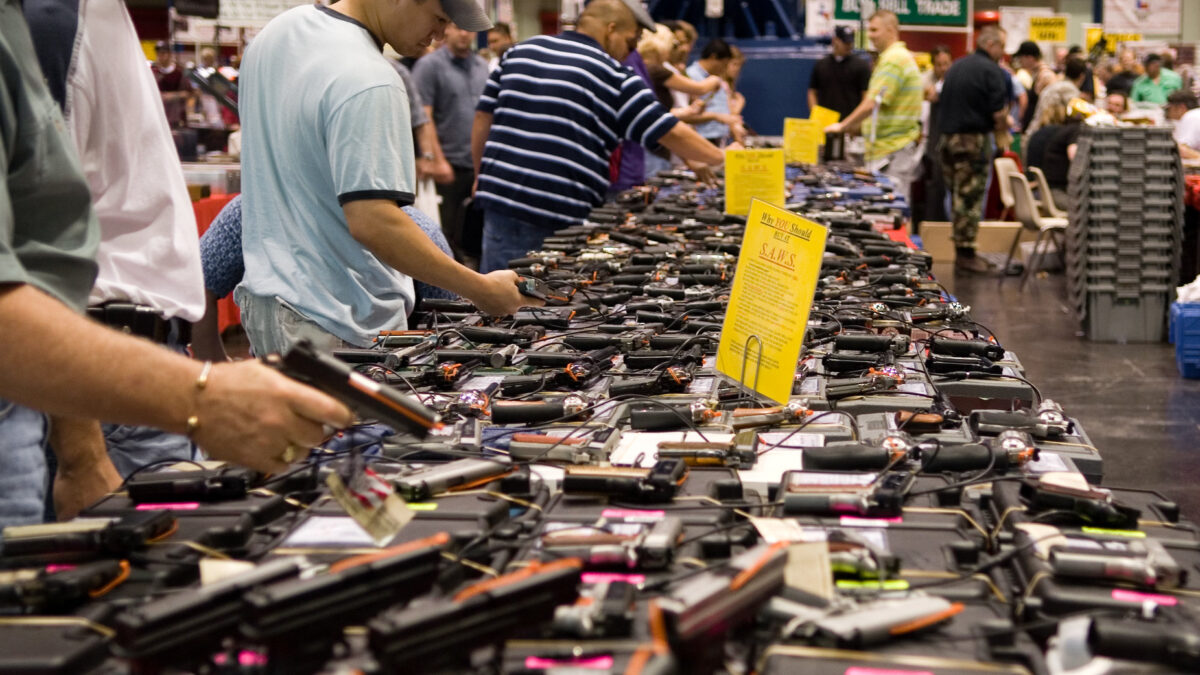In the aftermath of the brutal Orlando terrorist attack, comedian Seth MacFarlane—the fellow behind the talking teddy bear movie and the creepy song about women’s breasts—tried and failed to make a point about private gun ownership. After claiming that we need to “ban automatic weapons,” MacFarlane tweeted out two charts to seemingly make the case for gun confiscation:
(1/2) When this data… pic.twitter.com/rY6eGEi3Oj
— Seth MacFarlane (@SethMacFarlane) June 12, 2016
(2/2) …is cross-referenced with this data, it's pretty damning. pic.twitter.com/k3MqcfXQtc
— Seth MacFarlane (@SethMacFarlane) June 12, 2016
These tweets generated quite a big reaction, but the data they cite are not, in fact, “damning;” they’re not even purgatorial. To understand why, one simply has to compare the two charts, notice what is different between them, and also note the clever, if profoundly dishonest, sleight of hand in which MacFarlane engaged.
The first chart, which simply measures the rate of privately owned guns per 100 people, contains a large number of disparate countries from many different regions and continents. The second chart, in contrast, measures that data alongside gun-related deaths per 100,000 people. MacFarlane was trying to make the case that, due to the United States’ high levels of both gun ownership and gun violence on the second chart, we have a gun violence problem tied specifically to our high rates of gun ownership.
What is easy to see, however, and what MacFarlane neglected to mention, is that the second chart does not contain data comparable to the first one: there are many less countries on the second, and they are overwhelmingly more prosperous than most of the countries on the first chart, which comes from The New York Times. Indeed, the blog Tewksbury Lab—the source of the gun violence chart—explicitly makes that clear; they labeled it “Gun Violence as a Function of Gun Ownership rates for countries with a Very High Human Development Index Score.”
In other words, MacFarlane’s chart examining gun-death rates draws from a carefully curated and deliberately selective data pool, one in which countries with “very high human development” are the norm.
Ever Heard of Apples and Oranges?
Why does this matter? Because MacFarlane’s entire thesis is destroyed when you expand the data pool to feature more countries like those on the first chart. Indeed, Tewksbury Lab—from which MacFarlane borrowed the second chart then cropped out the title to cover up his rank dishonesty—provides an additional chart that proves this to be true: within a broader data pool that compares numerous countries of varying economic development, the United States still has the most guns yet has nowhere near the highest amounts of gun-related deaths.
Indeed, the countries in question with the highest rates of gun-related deaths—El Salvador, Honduras, Swaziland, Jamaica, Guatemala—all have overwhelmingly lower rates of gun ownership than the United States does. This means MacFarlane’s effort to correlate gun ownership and gun violence is reputed by his own data sources.
To be fair, the fellow who runs Tewskbury Lab, Joshua Tewksbury, feels the same way as MacFarlane, drawing a positive correlation between gun ownership and gun violence, “all other things being equal,” i.e., in countries of similar wealth and prosperity.
This is a favorite tactic of gun controllers, who prefer to compare gun violence rates only among “developed” countries while dismissing the contradictory data from undeveloped ones.
But as Ryan McMaken of the Mises Institute has pointed out, there is actually no good reason to restrict one’s comparative data pools in such a way (unless one is assuming that people in underdeveloped countries are mere brutal savages who simply can’t help but murder each other with firearms). Comparing countries in data pools outside the narrowly-restricted ones gun controllers favor actually yields excellent evidence that gun ownership and gun control both have no effect on rates of gun violence.
But MacFarlane couldn’t be bothered to engage the real-world data in such a fashion. It got in the way of his uninformed, slapdash opinion, and he probably wouldn’t have gotten nearly as many retweets.
The fight for gun rights has always been difficult, mostly because of con artists like MacFarlane. But gun rights activists have both the moral and empirical high ground regaring this precious civil right. The worst thing we could do would be to allow washed-up Hollywood charlatans to hijack the debate in a way that obscures the real facts of the matter. Be vigilant.









